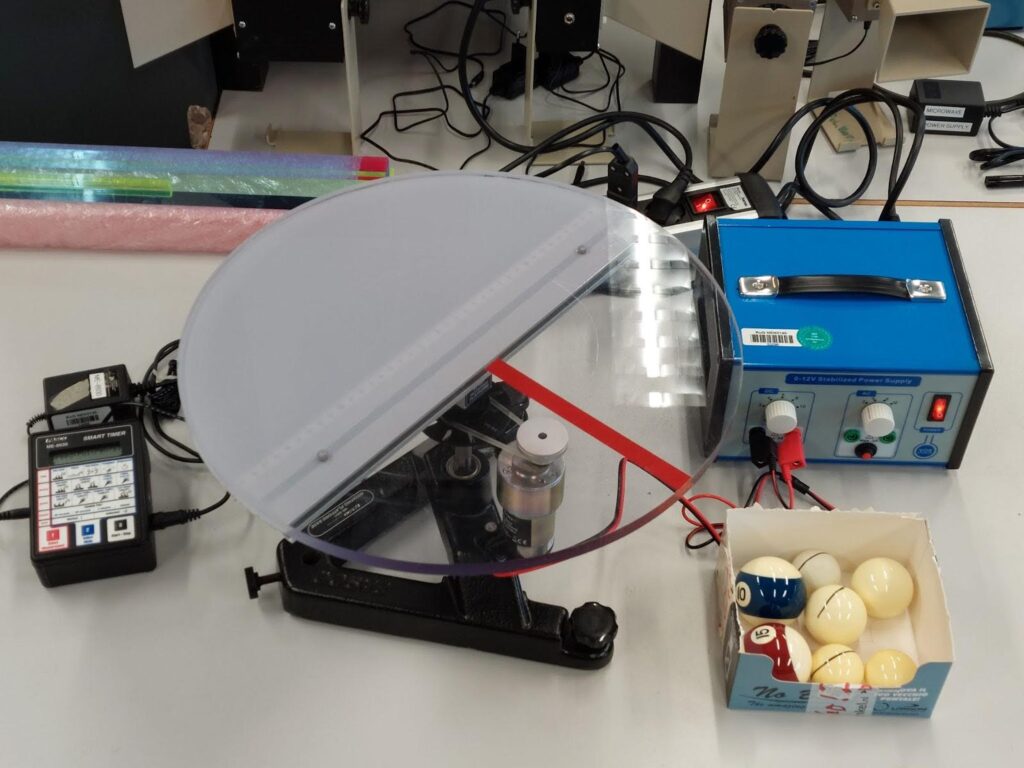1C10.20 - The Turntable Paradox
- Description
This demonstration illustrates the dependence of motion on reference frames.
The (hollow) ping pong ball quickly flies off the disc. Some other hollow sphere may be needed.
Inspired by https://www.youtube.com/watch?v=3oM7hX3UUEU (movie by Steve Mould, of chain fountain fame), which also shows the governing equations.
- Equipment
- Rotating flat disc with motor drive (max. 15 V)
- 12 V stabilized power supply
- Pasco Smart Timer
- Small, medium and large billiard balls (solid), smooth ping pong ball (hollow)
- spirit level (NL: waterpas)
- How to assemble and operate
- 1. Set up as shown, use spirit level to ensure that the disk is horizontal. Rubber band connection between motor and disc is such that the lowest speeds are obtained (which is still more than fast enough!)
- 2. Start the motor by setting power supply to a constant voltage, higher voltage = higher angular velocity [8 V => 2.4 revolutions per second, 12 V => 4.5 revolutions per second]. Allow some time for the disc to obtain a constant angular velocity.
- 3. On the Smart Timer, use red button 1 to select Measurement "Speed" and blue button 2 to select Mode Pulley "rad/s" or "rev/s". Use black button 3 to start/stop measurement.
- 4. While loosely holding the ball, gently place it on the spinning disk and let it get up to speed while keeping it at the same location. Only then remove your hand. The ball will stay spinning in the same location, until it is disturbed by a nudge or surface roughness. Then it will describe a circular orbit, which is an interesting effect/paradox. The orbital period of the ball is a fixed fraction of the spinning period of the disk, depending on the moments of inertia. Eventually the ball will fly off the disk.
